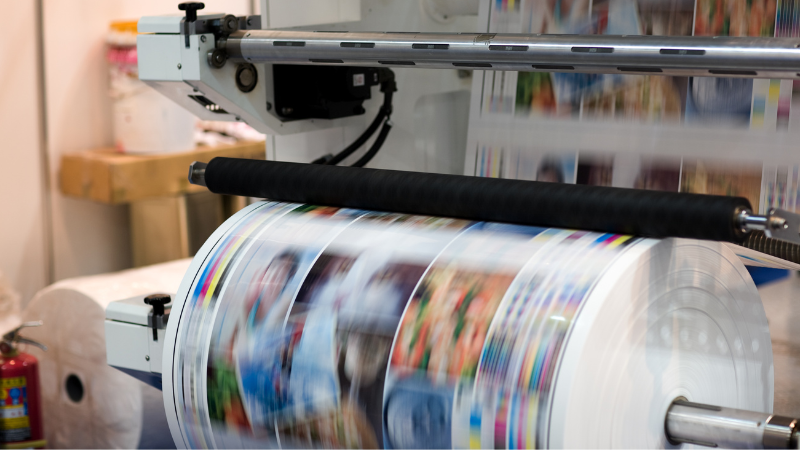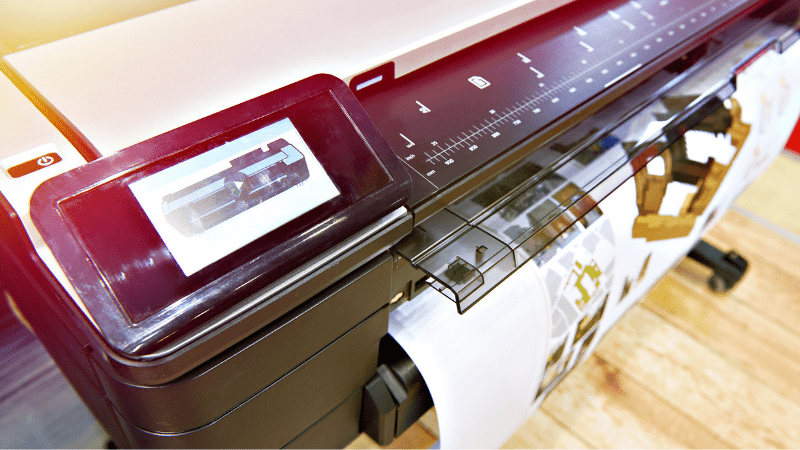Last Updated on November 17, 2023 by Packoi Team
In this article, you’ll get the answer to that question. You’ll also get specific tips and rules to follow to create the perfect catalog to help your business increase its sales.
The Role of A Product Catalog in Your Business
Why should you care about the design of your product catalog?
Because it has many essential benefits, it’s not just a perfect tool to increase sales.

It can also tell your brand story. It can give your customer base the information they need to patronize your products.
It would be best if you made this a part of your marketing strategy for many reasons. Here are the roles a finished catalog can add to your business.
1. They Influence Buying Decisions.
Catalogs are powerful enough to influence the buying decisions of your customers. Some studies reveal it’s more influential compared to TV ads or websites.
That means getting regular catalogs with stunning visuals can boost product sales. Despite the prevalence of websites and e-commerce sites, many companies still use records to showcase their products or services.
Don’t miss the opportunities that a good catalog design can bring. Use it to inform your consumers about your old and new products.
Keep them updated so they’ll feel a connection with your company.
2. They Can Engage Your Customers.
You might think that this is only true for digital catalogs. It’s not. You can make printed catalogs just as engaging as digital versions.
For instance, you can put instructions to post something online at the end of the catalog. Let the readers take photos or scan a QR code to receive education, prizes, or news about your company.
Use it to start a campaign or as a prerequisite for a brand contest that you’re holding.
Be as creative as possible when choosing the interactive elements you’ll use. You can even use stories and images to take your readers on an adventure to avail of a promo.
3. They Create Awareness.
The design elements of a product catalog can also create awareness. They can introduce ideas that customers have never thought of before.
For instance, you can use the catalog to introduce a new shopping method for your market. Give them detailed instructions on how to order through your multiple channels. Provide links and QR codes to make the process easier for the customer.
Even printed catalogs can be connected to your digital portal. If you use the right catalog design, you can still make this visually appealing.

4. They Can Leave A Lasting Impact (Compared To Digital Versions).
Marketing analysts reveal that a printed product catalog can leave a long-lasting impact on the minds of your target readers.
How?
The physical presence of the catalog promotes easier recall. Not only that, it’s easier for our brains to process the value of a product. That means it’s faster for us to decide if we want to buy something if we physically hold a catalog.
Apart from the recall, people also feel a deeper connection and association with the brand. This is great for developing customer loyalty.
5. They Awaken Positive Emotions And Strong Associations.
Holding a printed product catalog provides the reader with a multisensory experience. They can touch and see the products published on paper. It allows them to dwell on every detail of the product.
This can awaken positive emotions and memories that make the product enticing to buy. For some, browsing product catalogs makes them feel closer to life aspirations. It can even help ease anxieties and relieve readers of stressful feelings.
6. They Make The Buying Experience Convenient and Relaxing.
When you browse a product catalog, there’s no sense of urgency. You can browse it at your own pace. You can even leave a few pages unturned because you know you can return to the catalog when you have more time to browse it.
That’s precisely what your clients go through.
Consider this when you’re thinking of catalog design ideas. A fantastic catalog design will make the consumer’s buying experience convenient and relaxing. Use a catalog layout that makes it easy for them to return to products or services that caught their interest.
9 Tips to Create a Product Catalog Design Template that Stands Out
When choosing the right design for your product catalog, it’s essential to consider your consumers. Remember, they’re the ones you have to impress. You have to make it eye-catching specifically to your target market.

This is why your next design project should be carefully planned. It doesn’t have to be done by a professional designer if you don’t have the budget. There are unlimited downloads of catalog templates available.
As you’re selecting what you’ll use, consider the following tips to help your product catalog stand out:
1. Make It Inspiring.
As a marketing tool, your product catalog can be used to inspire your target market.
It’s not just about buying one product. A perfect catalog inspires readers to get everything they see in the photos. If you use great images that showcase how the product is used, you can entice the customer to buy everything there.
So if you’re a retailer and your product catalog includes apparel, shoes, and accessories, your photo should reflect the aspirations of your target market. The more aspirational the images are, the more inspiration they’ll bring to consumers.
The more likely they’ll act on turning their aspirations into reality by buying your products. That’ll bring more profit to your business.
2. Keep It Personal.
How can you make a product catalog personal? This will require a deep knowledge of who your target market is.
You can make any catalog personal if you use the correct visual elements. The key is to identify the life aspirations of your consumers.
So if your target is young mothers, use the right photos to showcase their aspirations. If your target market includes business people, using the right product photos will call out to them and make them feel personal.
Think about that as you choose the products you’ll highlight and the perfect catalog design you’ll use.
3. Let It Reflect Your Brand Personality.
Start looking for catalog design ideas that can show your brand personality well. Your brand identity will differentiate your catalog and make it stand out among your competitors.
Even if you’re using ready-made catalog templates, you can alter them to change the colors and font to suit your branding.
You can also choose a layout that can tell your brand’s story. This would be an excellent opportunity for your target market to know your business better.
4. Present High-Quality.
Your product catalog is a reflection of your business. If you want to impress your market so they’ll buy your products, you have to win over their trust.
How can they trust you if you give them subpar catalogs? Make sure the overall appearance is well thought out. Every catalog page should have the right graphic design. Choose premium paper quality so the many images in your product catalog will pop out and impress the readers.
All the other design elements should not be taken for granted. Every detail should count.

5. Use A User-Friendly Layout.
What does user-friendly layout mean? It has to be designed to make sense for your readers to turn to the next page.
You have to make it easy to read and scan.
It could be as simple as highlighting important information and surrounding it with white space. Or you can group similar products. Or group those that complement each other so consumers can buy them together (e.g., shirts and pants).
Look for ideas from professional templates. There are catalog designs online that you can look at for inspiration.
6. Put Stunning Images.
Your product photos will play a significant role in the overall look of your catalog. If you do it right, you can make it look like a product catalog magazine.
It’s not just about the quality of the images you’ll use.
It’s also about using the proper layout. Use image placeholders to help you identify where each photo should go. Don’t let the images crowd each other. Give them enough space so readers can appreciate each one.
7. Include A Clever Message
The content of your catalog also matters. It’s something that you also have to consider when you’re designing the layout of the record.
It has to be aligned with the products that you’ll highlight. The content that’ll need space in your catalog includes product descriptions, brand stories, ordering process, etc. It’ll affect your need for the page columns and how the images will be positioned around the text.
But beyond that, you should also include a clever message in your catalog design. Let it reflect your brand’s personality. Choose something that’ll leave a lasting impression on your market.
8. Play with Topography
You can find design templates that’ll give you ideas on how to play with the topography of your catalog. Or you can use design software to try out different font types on your catalog templates.
The key to artistically using topography is identifying the main messages you want to convey. Then you can choose the right font to convey the emotion behind those messages.
Then you can decide on the layout and color you want to use for the text. Just make sure that it won’t take the spotlight away from what matters—your products or services.
9. Think Outside the Box
You don’t have to stick to the standard catalog templates if it means stifling your creativity. Feel free to break the boundaries of what’s possible in your design.
Get ideas from design resources and even from a professional designer. Then add a little extra to make it unique to your brand.
What to Include In the Catalog Pages?
Part of the catalog design process is figuring out what to put on every page. To make this easier, you must consider how the reader will go through all the catalog pages.

Remember, you want them to look at every page and image. How should you design the pages so this can happen?
To help you with the planning, let’s identify the different catalog pages consumers must go through.
1. Cover Pages
This includes the front and the back cover pages.
For the front cover, you have to make it eye-catching. Why? Because this is the first thing that people will see. The cover design should evoke curiosity so they will pick up the catalog and see what’s inside.
The back cover can be functional. You can choose a photo or put information there that you know your market will need. This could be information about ordering, your website, or social media page details.
2. Introduction Page
Your catalog design should also include the introduction page. This would tell the reader what they can expect from the catalog.
The intro page should make it clear whether it’s about highlighting new products or seasonal ones.
That way, readers can set the right expectations when they open the catalog.
3. Table of Contents
This is another way for your market to preview what’s inside the catalog.
Make this part simple and easy to read. There’s no need to add an image. But if you play with the font, you can still make this a reflection of your brand.
Just make sure it’s not too distracting. It helps if you use a white background for this page. Usually, readers want to be able to glance at the table of contents and find what they need immediately.

4. Chapter Pages
The chapter pages in the catalog design will serve as the breaks between sections. If your product line has several categories, you can give each its chapter.
That way, the reader can quickly go to the products that they want to look at.
Of course, you want them to go through every single page. But a good catalog design should also provide an option to go directly to what they want to see.
This can be very useful if they return to the product they’ve seen during previous browsing sessions.
5. Product Pages
This is where most of your pages will be allocated.
The product pages contain the items that you want your readers to buy. You have to fill this with images, product descriptions, etc.
Remember, this is where you want your readers to decide if they wish to buy anything.
Use a catalog design that can impress your target market.
6. Other Page Elements
There are other elements that you need to include in your catalog.
The header, footer, page columns, thumb index, and color allocation for each catalog should be appropriately identified.
If you’re using software, these should be automatic in the design templates. But if not, that’s okay. Just make a list of what the catalog needs, so it provides a complete set of information for your target market.
These page elements can have a simple design. That way, it won’t overpower any image that’s near it. You still want the product photos to be highlighted, so keep the other elements muted but clear and visible.
4 Rules When Choosing the Right Design for Your Catalog
When choosing the right design for your product catalog, it’s essential to check design templates so you can get a variety of ideas. This can be helpful, especially when your budget can’t afford professional designers.

To help you choose the appropriate design, here are four rules you should follow during the catalog-making process.
1. Simplicity is the Key
This will depend on your brand. But if you don’t want to stress out over the catalog, keep it simple.
You can always get an example from the Internet to see how other brands do their catalogs.
Just make sure you don’t copy anything 100%. Keep your catalog unique. It may be simple, but it has to be original.
2. Choose A Template That Resonates With Your Brand And Market
Always keep two things in mind when choosing among design templates: your brand and your market.
If you’re working with designers, ensure they’ve been briefed about your brand. That way, they can stick to elements representing your brand correctly.
Why? Because your ideal market resonates with your brand. If your catalog reflects your brand, then it follows that it’ll appeal to your needs as well.

3. Analyze The Catalog Metrics
It’s always a good idea to look at past catalogs to provide an example of what to do and what not to do.
Check the metrics of previous catalog releases to know what you can use for the next ones. You want to make sure that every catalog you release will be an improvement of the previous one.
4. Always Proofread Before Printing
This is a must to ensure that you don’t waste any money. Always check and proofread your catalog before sending it to the printing company.
Some companies won’t consider proofreading as part of their services. So if there are mistakes, you might end up with a whole batch of catalogs with typos or image mistakes.
Do You Need an Expert Opinion to Make Your Catalog Design Stand Out? Packoi Printing is Here to Assist
Creating a catalog that can stand out among your competition doesn’t have to be complicated. You must know the proper guidelines and tips to help make the most fantastic catalog.
If you need help designing your catalog, Packoi Printing has designers who can help get you an example of a fantastic record.
Get in touch with us and let us know your ideas. We can give you a fair quote based on your specifications.




